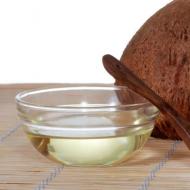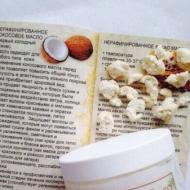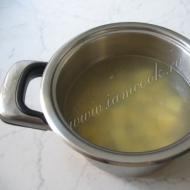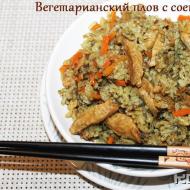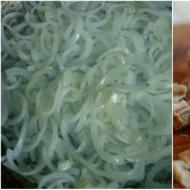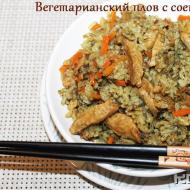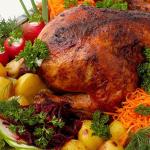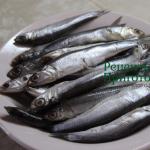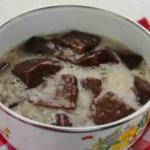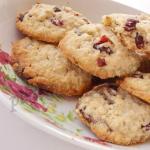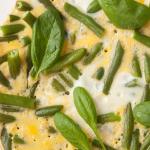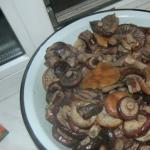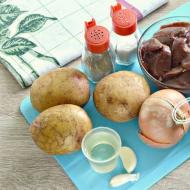
What is the best sugar dissolver? Melted sugar. Burnt sugar with milk
Sometimes, to make an interesting sweet sauce for desserts or just to make caramel, there is a need to melt sugar. The whole procedure is simple and does not take much time, however, there are some consequences, for example, burnt dishes or a dirty stove, which are possible if certain rules for heating sugar are not followed. Let's consider them in more detail.
The whole process will not take even an hour, and the tools and products that are needed for it are only the presence of sugar and a saucepan.
sugar melting process
Sometimes a recipe for a dish involves melting sugar with something, and if nothing specific is written, then it is better to melt the sugar first, and then add the rest of the ingredients.
To melt sugar, you must constantly be near the stove, so you will have to put aside all extraneous matters and do only that. And since sugar also melts poorly, you will have to put some effort and patience in order to eventually get the desired consistency.
If you have never practiced melting sugar before, take for this purpose that pan or ladle, which in which case it will not be a pity to throw it away. Note that earlier they used to heat sugar in aluminum containers, but now it is quite possible and convenient to use dishes with a non-stick coating.
Let's start melting. To begin with, pour sugar on the bottom, level it and put it on a small fire, do not immediately interfere, otherwise it will crystallize. Only after most of it is melted, you can stir, but experienced housewives recommend simply rocking the container in different directions. In this case, the burning of the surface is minimized and the sugar that has not melted will begin to do so. If you do without stirring, the resulting caramel will be transparent and clean. After all the sugar has melted and you have obtained the desired consistency, you must turn off the fire.
After pouring the caramel, by the way, if you are making candies, do not forget to grease the molds with oil, in this case, future caramels and candies can be easily removed from the molds. So, as soon as the melted sugar is poured, pour a little milk into a saucepan or ladle and put it on fire. In this case, the adhering sugar will melt a little and mix with milk, which will allow you not to scrape it off later from the sides of the container. Well, anyone can knock out milk, it will become not only useful, but also sweet, which will delight children very much.
How to beat softened butter with sugar
Often in recipes there is an expression "whipping butter with sugar." This may be necessary for the preparation of a fluffy and delicate butter cream or for the preparation of some butter-based pastry.
But sometimes housewives complain that the butter does not whip well, that the mass is not lush, and the sugar does not want to completely dissolve. In order for whipping butter with sugar to turn into a pleasant process with an excellent result, consider some of the nuances:
For whipping, use high quality natural butter;
Beat butter at room temperature;
Add sugar to butter gradually. This will allow the sugar to completely dissolve;
Use premium sugar. It has the best consistency for whipping. This sugar has medium crystals and during whipping, due to this, it saturates the cream with air (unlike powdered sugar). In this case, the volume of the cream doubles;
From time to time, clean the edges of the whipping container with a culinary spatula and send the butter adhering to the walls into the cream for even preparation of the cream;
Don't beat the butter and sugar for too long. As soon as the mass becomes lush and creamy, stop beating.
Making caramel at home is a very exciting experience. You can make decorations for cakes from caramel, sculpt a variety of shapes - excellent for the holidays, and as a gift - original and tasty. The caramel recipe is quite simple, but there are some subtleties.
You need a saucepan with a thick bottom - otherwise it will burn.
We make caramel according to the recipe: sugar 1 cup + 1/4 cup of water (enough so that the sugar is only slightly moistened) + 1/2 teaspoon of vinegar. I can’t say exactly what vinegar does here, but it is added there (according to old recipes). Most likely - to avoid the crystallization of sugar.
Then we cook everything over low heat until a test for a "hard ball" (we drop syrup into the water, it is necessary that it becomes like chewing gum - it does not fall apart, but sticky and stretches). It is better not to overcook than to overcook, otherwise you will get burnt sugar - it is not for everybody, not everyone likes it.
If you are going to sculpt from caramel, then after cooking we put the dishes in which everything was cooked in a saucepan with hot water so that the caramel hardens more slowly, and you have time to make something out of it.
We take the desired portion of caramel with a spoon and spread it in different directions several times, then it will become "pearl", well, after that we sculpt it, as if from mastic. If some part has frozen ahead of time, then it can be heated over the fire - it will soften, and then you can sculpt again.
If you need liquid caramel, then add a little butter and water to the resulting mass (when the sugar has melted and boiled for 10 minutes), and if you need thick caramel, then pour it into greased molds and let it cool. You can also make caramel with the addition of citric acid, nuts, cocoa or chocolate.
There are special tools for sculpting caramel. In Russia, it is difficult to find such for sale, but there are abroad.
When heated, granulated sugar (brown sugar can also be used) melts and at 170 ° C becomes golden, and then dark brown. The darker the color, the more intense the fragrance. Some recipes recommend adding water to get caramel, but this is not necessary - sugar can be melted without water at all.
To get caramel, put the sugar in a saucepan and place it over medium heat. Do not stir until most of the sugar has melted. When the sugar is melted, stir it until it reaches the desired color (this is fast, only 1-4 minutes). Watch your sugar closely caramel darkens quickly and can burn .
Caramelized sugar can be used to coat caramel custard molds, make caramelized nuts, and to flavor mousses or ice cream. Well, as already mentioned, sculpt various decorations from caramel.
How to avoid crystallization
Heat sugar over low heat without stirring until it completely dissolves. Bring the syrup to a boil only when the sugar has already dissolved, and do not stir after boiling.
You can squeeze some lemon juice. Or - as mentioned above - you can apparently add a little vinegar for this, better of course homemade apple.
Dip a pastry brush in hot water and brush the crystals off the sides of the pan until they dissolve into the syrup.
Be careful not to touch the hot caramel - it can cause severe burns.
Caramel - we drown sugar WITHOUT WATER
This is our recipe, according to which we have been preparing lately, we no longer use any other recipes:
We make caramel without water.
Pour 2 cups of sugar (WITHOUT WATER) into the bucket, stir without interruption(we drown on an electric stove, on a three-ruble note from 4 positions of the stove, because on a fairly strong fire). When it starts to become liquid, we lower it to a kopeck piece, without ceasing to interfere (in no case do we stop interfering, otherwise it will burn right there). When completely melted, lower to one, stir until completely dissolved. Carefully so that the smoke does not go, so as not to burn. You can even remove and continue to interfere so as not to overheat.
When everything is melted, pour into a silicone mold. Beware, it's VERY hot!
It hardens to a hardness, it becomes like glass, not sticky at all, but completely solid. Then we break it into pieces and eat it like candy. DELICIOUS! You can dissolve in water, make a syrup, it will taste a little like Pepsi-Cola. Such a syrup can be made thick (dissolve a lot of burnt sugar in a little water), great for coffee, gingerbread, etc.
Before pouring into a silicone mold in caramel, you can add spices, stir, and only then pour into a mold and let it harden.
Delicious sweetness based on caramel
Slowly heat one glass of sugar until it becomes liquid, add half a liter of milk, and cook for 10 minutes, stirring, then add 2 tablespoons of honey, 100 g of butter, 2 tablespoons of vanilla sugar, and cook over low heat, stirring, so much time for the mass to thicken.
Put the mass on greased parchment paper and wait a bit to cool, then cut with a knife into squares or rhombuses.
Finished caramel
For those who do not really like to experiment: you can find good caramel on sale. For example:

Monin syrups are produced by the French brand of the same name, which is known as the leading manufacturer of alcoholic and non-alcoholic syrups in the world. They have there is also caramel syrup.

Kotanyi has excellent caramel with different flavors in the mills: vanilla, orange, and many other varieties. Perfect for cupcakes, coffee, tea, porridge, just about anything.

Candy caramel Malvik "Mini-M" is a delicious and natural delicacy that you can enjoy almost endlessly. For those who want to try everything at once, this assortment has been specially created, in which everyone will find their favorite taste.
The mixture during cooking will have a rather strong aroma, so it is better if the room is well ventilated. For frying, you will need a deep frying pan or a saucepan with a thick bottom.Ingredients:
Sugar
water
How to prepare lollipop:
Sugar is laid out in a frying pan, the same part of water is added and put on a strong fire, stirring the mass continuously (otherwise it will instantly burn and stick tightly to the bottom of the pan).
In the process of cooking, the syrup will gradually change color to golden brown, at which point it can be removed from the heat and poured into molds or onto baking paper.
As molds, you can use ordinary tablespoons. Burnt sugar, transferred to portioned containers, is immediately doused with cold water.
Caramel
Ingredients:sugar
water
a few drops of lemon juice
butter or sunflower oil
How to cook caramel:
The principle of preparation is the same: sugar is heated in a small saucepan with a minimum amount of water, after boiling, lemon juice and a little oil are added.
Be sure to constantly stir the mass to avoid it sticking to the bottom and the smell of burning.
Having brought the mass to the desired consistency and removed from the fire, they lower a long wooden stick into it, wrap a small amount of goodies on it and pour cool water over it.
Sherbet
Ingredients:sugar
milk
pieces of nuts
How to cook sherbet:
When preparing "fried sugar" on a milk basis, the fire should be made very small, and stirring should be activated, as the sugar will try to burn from below, and the milk will boil away from above.
Add nuts to the mixture (preferably after it has been removed from the heat). Such a mass can not be poured into molds: it will turn out to be quite brittle and fragile.
Now it has become quite popular to add purchased food colors and flavors to improvised sugar caramel. They give originality to caramels, especially if you cook burnt sugar of different colors in several pans at the same time and pour it into molds, drawing various patterns on them. But still, it is worth remembering that the main charm of such sweets is their naturalness, and the use of numerous artificial additives will only spoil the product.
The resulting products are quite hard - it is better not to try to crack them: you can ruin your tooth enamel or get hurt by a chipped sharp piece of candy. However, in this regard, they are no more dangerous than purchased analogues. In addition, many people like the specific aroma of burnt sugar, and an artificial flavor with such a smell has never been created.
It's time to talk about the technology of sugar caramelization as such. There are a lot of recipes where it is required, so let's sort out the information, understand the methods and stages of sugar caramelization.
So. What does it mean that sugar caramelizes? Discarding special terminology, let's just say - it melts. This happens at different temperatures and is achieved in different ways.
For starters, a few simple rules.
- Dishes (frying pan, saucepan) and a steel spoon - or a wooden, silicone spatula - for stirring must be absolutely clean. Because the smallest particles of food debris or garbage will immediately begin to re-crystallize the melting sugar around them.
- We do not use dishes with Teflon or other coatings, which are contraindicated for scratches, since grains of sugar will provide these same scratches to it.
- And let's be careful! Hot syrup has a temperature of 150-190 °, it will take a long time to treat even small burns. And if you need to add, for example, cream or another liquid to the syrup, we are doubly careful: the foam will be stormy, it may splash out. We heat the liquids in advance and pour in a thin stream at the edge of the dish, and not in the middle.
Sugar can be caramelized dry and wet methods.
Dry way.
We heat a saucepan (frying pan) with a wide thick bottom and high walls over medium heat. Pour in some sugar and let it melt. Next, add sugar in small portions, each after the previous one has melted. Do not forget to stir and cook until the color we need.
wet way.
Put the sugar in a bowl all at once and add water, mix. Sugar should, after mixing, resemble wet sand in consistency. The maximum amount of water is 30% by weight of sugar. In order to prevent a new crystallization of the melted sugar, you can add a little lemon juice, or citric acid, or vinegar, corn syrup. Moreover, literally 1-2 drops of lemon juice are enough for a glass of sugar.
We put the pan (frying pan) on a large fire and constantly stir the wet sugar until it boils and dissolves completely. As soon as the mixture boils, stop stirring it and remove all possible impurities from the surface.
To make the caramelization go more evenly, take the handle, slightly tilt the pan and shake it in a circular motion.
In advance, put a mug of cold water and a culinary brush next to the stove, best of all - silicone. While the sugar is melting, periodically we pass with a moistened brush along the walls of the pan or pan. On the hot walls, the liquid from the syrup quickly evaporates, new sugar crystals form. We do not need this, so with the help of a brush we keep the walls clean until the end of the process.
caramel color changing - depending on the duration and temperature of heating - from light yellow to brown. The darker, the more burnt sugar flavor.
There is a good trick: no matter what method of caramelization we use - a little earlier than the caramel reaches the color we need, remove the dishes from the heat and put them in cold water with ice. The fact is that sugar keeps the temperature perfectly, and if the process is not stopped by such a radical method, the sugar can darken or even burn.
In any case, remove the dishes from the fire a little earlier than the syrup acquires the color we need - it will be achieved due to residual heat.
When heated, sugar liquefies and changes its texture. Those. at first it becomes sticky (strings stretch behind the spoon), and later it forms “balls”. The following is a detailed description of the stages of changing the syrup during caramelization and its application at each stage.
simple syrup (not particularly related to caramelization, but useful to know).
Just a mixture of sugar with enough water, which we heated until the sugar was completely dissolved. You can add any alcoholic drinks to your taste, spices and let stand under the lid for 15-20 minutes. Such a syrup is good for cooking fruits, soaking biscuits, greasing puff products.
Enveloping.
This stage of caramelization occurs at 100°. Clear syrup, almost boiled. Quickly dipping a slotted spoon into it and immediately taking it out, we will see that the syrup “enveloped” its entire surface. If we are going to cook fruit in syrup, this is what we need ..
Stage "little thread" - this is a temperature of 103-105 °. We can repeat (carefully!) the reception of professionals: we dip the thumb and forefinger folded together into cold water and then very quickly into the syrup. You can just take a little in a spoon. Slowly spreading the fingers, we will see that short threads about 3 mm wide stretch between them. They break quickly. Such a syrup is needed to prepare, for example, almond pastes.
big thread (at 106-110°).
It is, of course, stronger and wider - about 5 mm. We prepare this syrup if the recipe simply says “sugar syrup” - without clarification. It is needed for icing and buttercreams.
little gem (110-112°).
A stage that occurs a few minutes after the previous one, when bubbles begin to appear on the surface of the syrup. We collect a little in a spoon, grab it with wet fingers - a wider thread forms between them. Used for some types of nougat.
big pearl , or soufflé (113-115°).
At this stage, the thread between the fingers has a width of up to 2 cm. And if you lower the slotted spoon into the syrup, remove it and blow on it, we will get bubbles on the reverse side. This type of syrup is needed for cooking jam, making candied fruits and chestnuts, glaze.
Small - or soft -ball(116-118°).
Our syrup has clearly thickened, if you take it in a spoon and dip it in cold water - it will curl up into a small ball. The syrup at this stage is also good for jams, but also for jellies, soft caramel and nougat.
Large - or hard - ball (121-124°). The temperature is slightly higher, and therefore a harder ball is formed. Jams, sugar decorations, sweets and caramels are the purpose of the syrup.
Light - or soft - crunch (129-135°).
At this stage, drops of syrup, dipped in cold water, harden instantly. We crack it - and the fragments of the ball immediately stick to the teeth. But what toffees are obtained!
hard crunch (149-150°).
Now the bitten ball no longer sticks to the teeth. Around the edges of the dish, the syrup begins to turn pale yellow. If we are going to prepare lollipops, twisted sugar decorations, icing - it's time to remove from heat and put in cold water, otherwise it will already be caramel.
light caramel (151-160°).
There is practically no water left in the syrup, it quickly begins to turn into candy and caramel. From pale yellow, the syrup turns golden and brown. The most it is for caramel cream, sweets, puddings, icing.
Brown - or dark - caramel (166-175°).
Last stage. Oddly enough, dark caramel loses its sweet taste. Therefore, when cooking on the basis of dark caramel, you have to add sugar. Burnt oil is used most of all for coloring sauces, broths, baked goods and confectionery.
At 190°, sugar begins to burn and smoke.
If we prepared caramel for homemade sweets, pour it into molds greased with butter and let it harden.
We hope that this description will help to navigate the process of sugar caramelization for those who are not familiar with it yet.
There are recipes in which sugar for caramelization is not mixed with water, but with butter or vegetable oil. This is how meat, fish, pieces of vegetables and fruits are often caramelized, especially for Tarte Tatin pies.
Some juicy fruits are caramelized in a heated frying pan without oil, just constantly stirred so that the sugar does not burn. Such caramelization lasts 5-7 minutes, and pieces of fruit acquire a golden hue and caramel taste.
Finishing the topic of caramelization, I will only add that any theory, as you know, is verified by practice. So let's get up to the stove - and try. And everything will turn out - albeit not the first time.



